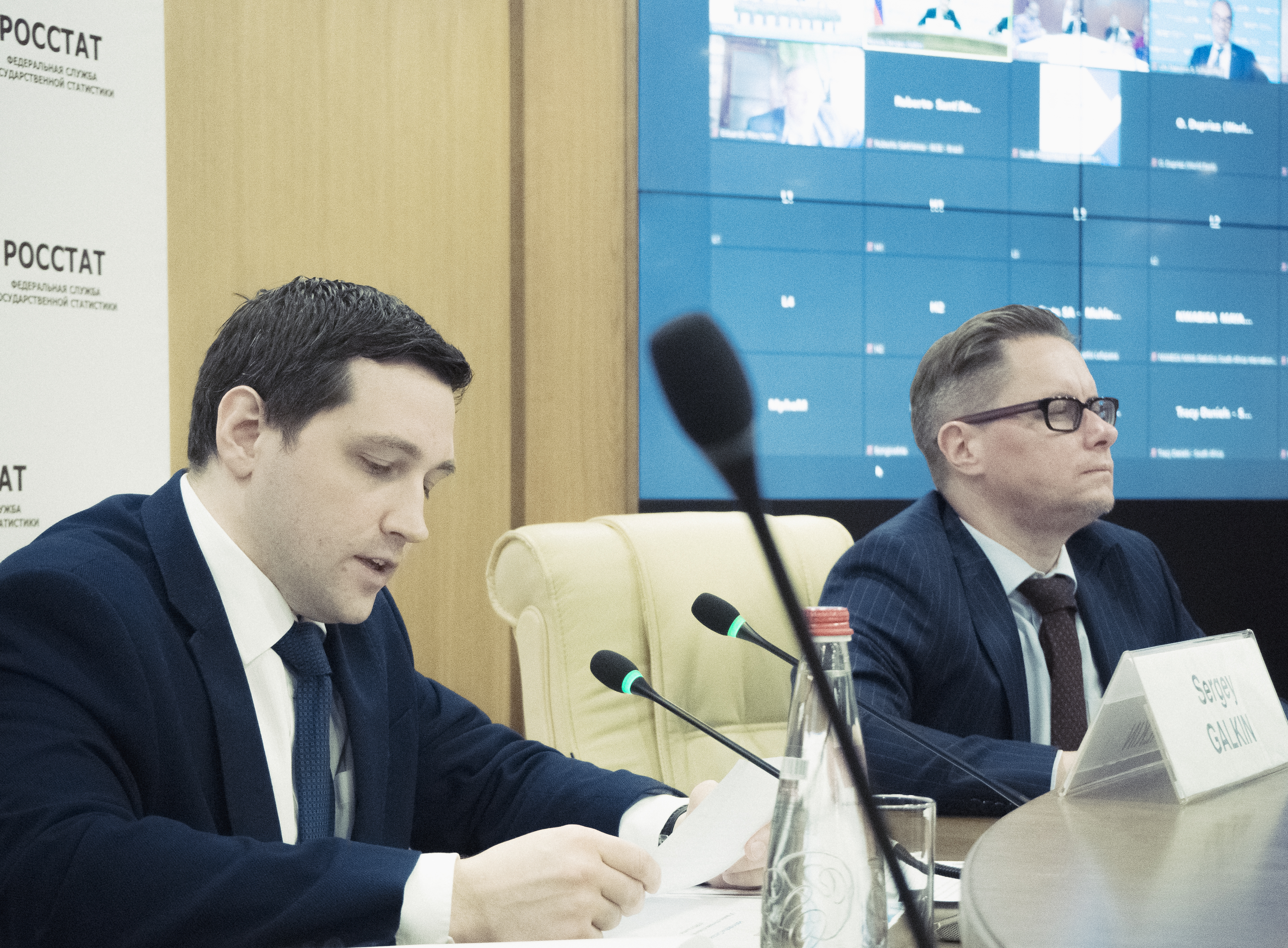New initiatives within BRICS: Rosstat took part in the 14th meeting of Heads of BRICS National Statistical Offices
BRICS Joint Statistical Publication 2022 was released at the 14th meeting of the Heads of BRICS National Statistical Offices (NSOs). The publication provides readers with the important information about economic and social processes in BRICS member-countries.
Sergey Galkin, Head of Rosstat, drew the attention of his colleagues to the importance of using alternative sources for the formation of official statistics, which is closely related to the digitalization processes of statistical production. According to Sergey Galkin, “digitalization will become a driving force for development of our statistical offices in the nearest future.” The heads of the statistical offices from Brazil, Russia, India, China, South Africa, as well as representatives of the UN Statistical Division and the World Bank also shared their views on the current statistical development trends.

Achievement of Sustainable Development Goals, increase of the importance of environmental statistical observations, use of big and administrative data and digitalization were among the topics discussed by the Heads of BRICS NSOs at the meeting.
Sergey Galkin noted that one of the key current trends is a change in approaches to interaction with data users, which are the major clients of national statistical services. "It's important to focus on their needs, responding quickly to the ongoing changes and ensuring the required data quality", said the head of Rosstat.
According to Sergey Galkin, “production of timely statistics based on the use of administrative and big data, re-use of collected and aggregated information, creation of digital platform of full statistical production cycle, as well as making Rosstat a single center for statistical methodology and expertise” are among the most important goals for our NSO in the coming years. “All these tasks should be carried out based on advanced international standards and best statistical practices,” added the head of Rosstat.
He also outlined the targets to apply 100% of administrative data sources that are corresponding to statistical quality standard as well as to use big data as the sources of statistical information for 75% statistical areas.
Involving the entire statistical community in the methodological and technological development of statistical production is another topic raised by Sergey Galkin. “Official statistics will not be able to achieve this on its own”, said the head of Rosstat. “We have to work together with the expert community, universities, professional and business associations, government and wider society, meaning, with everyone who involved in collecting, processing and using statistics, as well as in statistical training."
He also proposed to establish interaction between statistical communities, in particular, to collaborate on producing joint professional development programs for statisticians in BRICS countries, to engage cooperation between national statistical associations, universities and special statistical publications.
During the meeting, National Bureau of Statistics of China (NBS) responsible for JSP preparations in 2022 released BRICS Joint Statistical Publication 2022 containing the main information about economic and social processes in BRICS member-countries in 2021.
The publication includes detailed data on changes in the most important macroeconomic and social indicators, such as indicators of economic activity of the population, GDP dynamics and structure, price indices and population living standards. In addition, there are data on the production of the most important industrial and agricultural products; development characteristics of various spheres of energy, transport, communications, finance, foreign economic relations of countries, as well as data on ecology.
JSP 2022 consists of 15 chapters with statistical information and 5 annexures providing overviews of BRICS countries’ statistical systems.
The chapters include summary tables with comparable statistics of the five countries, country tables, containing more detailed information that each country considers important to deliver to the reader (102 tables) and graphics visualization of individual indicators (27 graphs).
Along with the BRICS Joint Statistical Publication 2022 NBS also presented BRICS JSP Snapshot 2022, a shorter version of JSP 2022 aimed for a wider range of users.
Presentations delivered by the participants of the 14th meeting of the Heads of BRICS NSOs can be found below.
